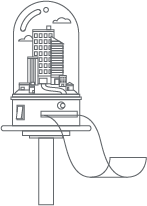Authors
For anyone who has a private company (Pty Ltd) in their family structure, you would have likely heard of the term, Division 7A.
It’s a frequently talked about topic, however, is not always easy to understand.
So, what is Division 7A and how does it apply?
Division 7A relates to section 109 of Division 7 of the Income Tax Assessment Act 1936 (ITAA1936).
It covers situations where a private company provides a payment or benefit to a shareholder or associate of the shareholder.
Most often the scenarios of Division 7A apply whereby a business trades through a discretionary trust and passes income to a private company, commonly referred to as a “Bucket Company”.
This is often done to assist in reducing tax liabilities as the company has a fixed income tax rate rather than the individuals who have a variable tax rate.
Usually a good outcome, but more often than not the cash is never passed across to the company and as a result, an implied loan is created and Division 7A of the ITAA1936 is triggered.
If the cash is not passed to the company, as mentioned, the loan is created between the trust and the company.
Division 7A requires the entire loan to be repaid via an Unfranked Dividend to the shareholders.
This means the shareholders, who are most likely individuals, would receive additional income that would be taxed at their own marginal tax rate, often resulting in a worse than intended original tax consequence.
So how do we stop the impact from Division 7A?
Option #1 – Cash
You could elect to pay the income across to the company in cash.
This must be done by the lodgement date of the company’s tax return in the income year following the distribution.
This will result in the cash being in the company’s bank account and not the trading entity, potentially reducing the ability for using that cash to continue the farming operations.
Option #2 – Complying Loan
The ATO allows you to put in place a Division 7A complying loan agreement.
The criteria for a complying loan agreement are:
- One that is written.
- Charges the ATO minimum interest on the loan. Currently, the rate is 4.52%.
- Has a maximum repayment term of seven years unless holding land as security and a mortgage is registered by the company over the land and then the maximum loan term is 25 years.
- Ensure that minimum yearly repayments are met each year.
To make the minimum repayments, cash would then need to be passed to the company, resulting in the implications of Option #1 occurring.
Alternatively, the company could pay a dividend out to the shareholders to reduce the loan.
This dividend although it may be fully franked, could then lead to further tax consequences for the individuals who receive it.
Option #3 – Look at a Business Restructure
There are other options for still having a company involved in your business operating structure that will not trigger Division 7A.
To avoid unnecessary income tax or stamp duty implications, any business restructures need to be considered and planned carefully.
The option you choose for dealing with Division 7A will have varying consequences on your business operations.
Determining the most appropriate course of action is not always easy and will involve in-depth discussions with your accountant to determine the best course of action.
The most important thing is to ensure that you clearly understand your operating structure and how it works for you.
Remember, every business may be structured differently for different reasons.
There have been more developments in the Division 7A Tax, click here to read more.
CONTACT US
If you have any questions on Division 7A or are looking for advice on your business please contact your local RSM office.





